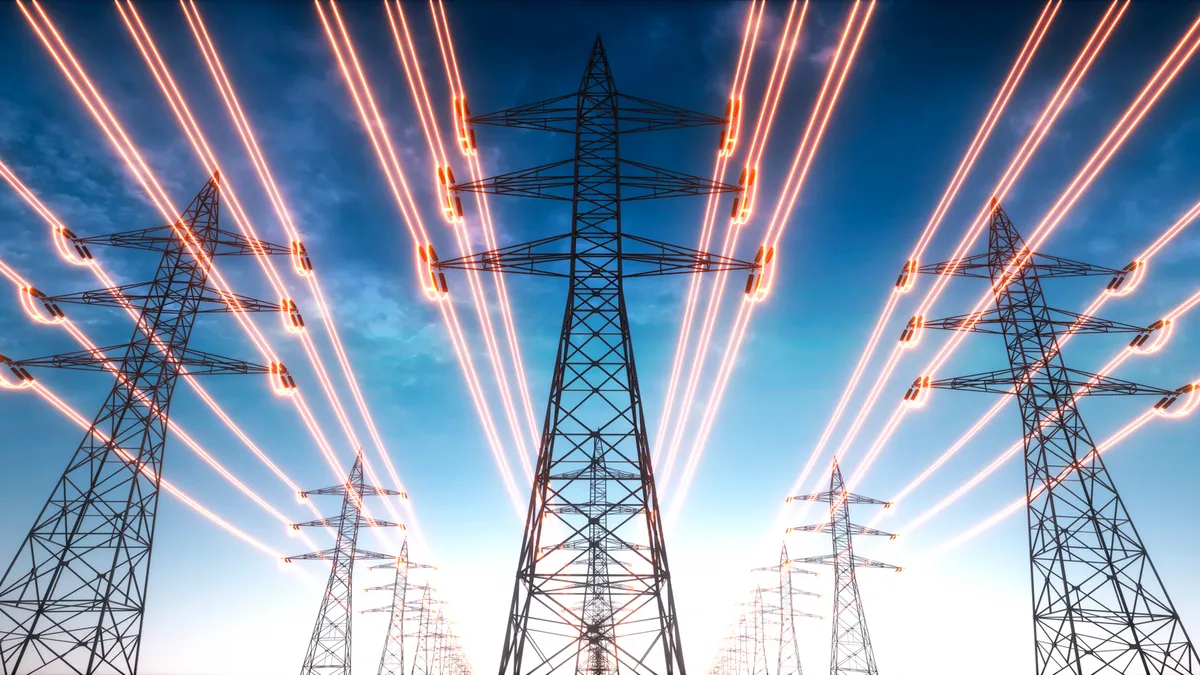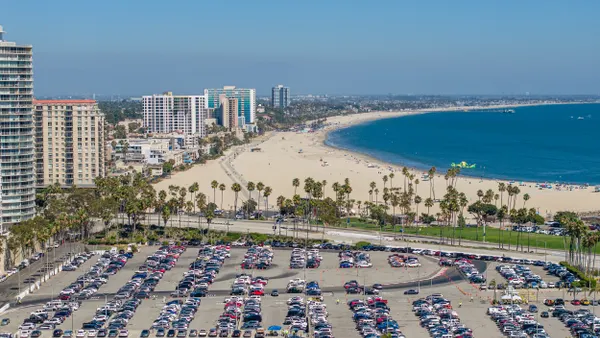Dive Brief:
- The U.S. Department of Energy on Wednesday announced nearly $3.5 billion in awards under its Grid Resilience and Innovation Partnerships program, known as GRIP, to support 58 projects in 44 states. When matched with private and local investment, officials said the awards will support a total of $8 billion to expand and strengthen the nation’s electric system.
- It is “the largest ever investment in America's grid,” said Energy Secretary Jennifer Granholm. Billions more in future GRIP funding is planned.
- The smallest of yesterday’s awards include smart grid grants of around $1 million to individual cities, and the largest is $464 million to support the construction of five transmission projects across seven Midwest states.
Dive Insight:
More than half of U.S. transmission lines and power transformers were installed before 1970 and the outdated grid is vulnerable to the increasing impacts of the climate crisis, said DOE officials.
The bipartisan infrastructure law made $10.5 billion available to DOE’s Grid Deployment Office for GRIP. The program aims to help mitigate wildfire and other climate change risks, unlock stranded renewables projects, and boost the flexibility, efficiency and reliability of the nation’s aging electric power system.
“This round alone is the largest ever investment in America's grid,” Granholm said. “It's going to enable more than 35 GW of renewable energy on the grid and it will also boost the current renewable capacity as well by more than 10% within this decade.”
The program represents a new approach to grid upgrades, a senior DOE official told reporters. All of the awards have stipulations in place between community groups and developers, known as Community Benefit Agreements, agreeing to local benefits in exchange for project support.
“Historically, grid upgrades have not necessarily involved a ton of community engagement and we're trying to change that paradigm through this process,” the official said. “By asking people to engage from the Justice40 perspective, and engage with disadvantaged communities, [projects] are much more likely to be built.”
President Biden’s Justice40 initiative calls for 40% of the benefits of certain federal investments to flow to disadvantaged communities that are marginalized, underserved and overburdened by pollution.
While energy siting reform remains a work in progress, “the funding itself makes these projects almost irresistible,” Granholm said. “We've gotten huge support from states, from localities where the proposed projects will be.”
DOE received 700 initial concept papers for GRIP projects, and then encouraged 300 different organizations to make full applications. The awards announced Wednesday are not final and still require applicants to undergo a negotiation process with the agency.
The largest award will support the Joint Targeted Interconnection Queue portfolio, known as JTIQ, involving construction of five transmission projects across seven Midwest states. The projects are in Iowa, Kansas, North Dakota, Nebraska, Minnesota, Missouri and South Dakota, and will support resource adequacy in the Southwest Power Pool and Midcontinent Independent System Operator territories.
“The costs and uncertainty of the system upgrades have become one of the biggest bottlenecks for developing new renewable energy projects in the upper Midwest,” DOE said in a description of the project. “The JTIQ Portfolio project overcomes many of these challenges and provides numerous interregional benefits, including scalable transmission solutions, new renewable generation, lower energy costs, enhanced community engagement, and workforce development.”
Xcel Energy is developing two of the JTIQ projects and said the GRIP award would help advance that work.
“Unprecedented growth of utility-scale wind and solar projects in the central U.S. has created a bottleneck in the process of interconnecting new generation,” the utility said in a statement. “Right now, the transmission system along the locations where MISO and SPP meet is at capacity, and upgrades are too costly for individual energy developers.”
The GRIP award “is a critical step” in DOE’s efforts to expand the nation’s transmission capacity, increase connectivity between regions and add more clean energy, John Moore, director of the Sustainable FERC Project at the Natural Resources Defense Council, said in a statement.
“A larger grid is a resilient grid, and the funding for planning and coordination from today's grants will go a long way toward accelerating these efforts,” Moore said.
Entergy New Orleans celebrated its award of $55 million to fund the utility's Line Hardening and Battery Microgrid project, which it said will enhance the local grid’s resilience against storms.
“This is a huge win for our customers, for our community, and for the City of New Orleans,” Deanna Rodriguez, president and CEO of Entergy New Orleans, said in a statement. “Federal grant funds at this scale will enable us to make our grid stronger ... These funds will help offset the cost burden on our customers.”
The National Rural Electric Cooperative Association and a consortium of 39 cooperatives were tapped to receive nearly $100 million for wildfire mitigation.
“This infrastructure funding is an important step as electric co-ops work to harden systems against wildfires and enhance the reliability of the grid. These projects hold tremendous potential for local communities,” said NRECA CEO Jim Matheson.












